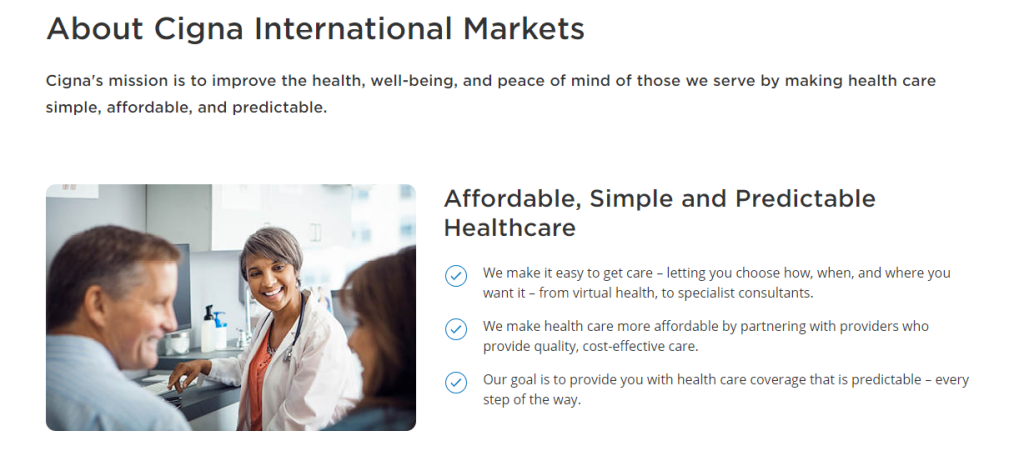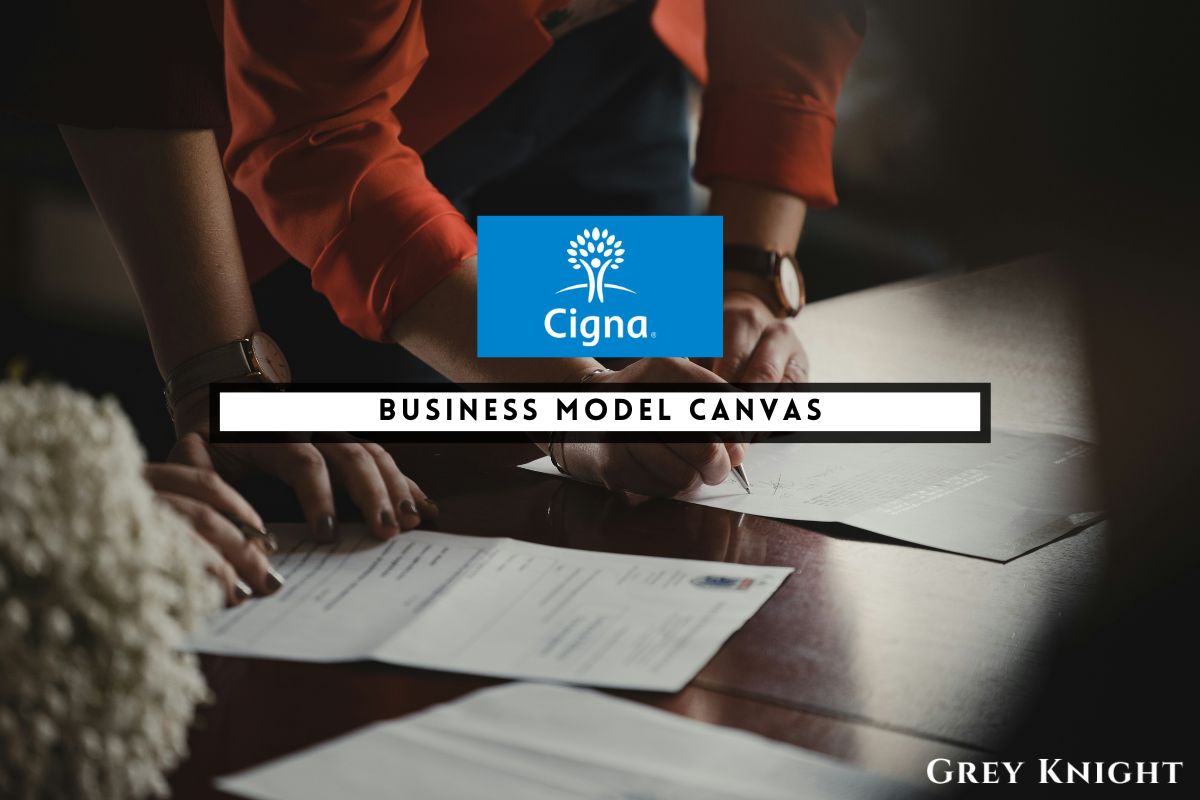Table of Contents
ToggleA Brief History of Cigna
Cigna Corporation was initially formed in 1982 as a result of the merger of Connecticut General Corporation and the Insurance Company of North America (INA). However, both of these companies had long and distinguished histories prior to the merger.
Connecticut General Corporation was founded in 1865 in Hartford, Connecticut as the Connecticut General Life Insurance Company. The company grew and expanded its offerings to include health insurance, annuities, and employee benefits.
The Insurance Company of North America (INA) can trace its roots back to 1792 when it was founded in Philadelphia as the first marine insurance company in the United States. Over the years, INA expanded into different lines of insurance, including life and health insurance, and grew into one of the largest and most respected insurance companies in the US.
After the merger, Cigna continued to grow and diversify its offerings, becoming a global health service company that provides a wide range of insurance and health-related products and services. Cigna has since become a leader in the industry, offering health, dental, disability, life and accident insurance, as well as retirement and investment products.
Cigna has expanded its global reach and now operates in over 30 countries, serving millions of customers worldwide. Today, Cigna continues to be a leading provider of health and insurance services, with a focus on improving the health and well-being of the people it serves.
Who Owns Cigna?
Cigna Corporation is a publicly traded company, which means ownership of the corporation is divided among numerous shareholders. As of the most recent data available, the top 10 shareholders of Cigna Corporation are predominantly institutional investors, including Vanguard Group Inc., BlackRock Inc., and State Street Corp. These large investment firms hold significant stakes in the company and provide stability to its ownership structure. Additionally, there are also individual investors and smaller institutional investors who own shares in Cigna Corporation, contributing to the diverse ownership profile of the company. This diverse ownership structure helps ensure that Cigna Corporation is accountable to various stakeholders and is not overly dependent on any single shareholder or group of shareholders.
Cigna Mission Statement

Cigna Corporation’s mission is to improve the health, well-being, and peace of mind of the people they serve by making healthcare more affordable, predictable, and simple. They are committed to helping individuals and families achieve their best health by providing access to quality care, innovative solutions, and personalized support. Their mission is driven by a deep dedication to enhancing the lives of their customers and creating a more sustainable healthcare system for the future.
How Cigna Makes Money?
Cigna Corporation is a global health service company that makes money primarily through the sale of health insurance plans and related products and services. The company generates revenue through premiums paid by individuals and employers for coverage, as well as fees for services provided to policyholders. Additionally, Cigna earns income from investment returns on its substantial assets under management. The company also offers a range of healthcare and wellness programs, which contribute to its overall revenue stream.
Cigna Business Model Canvas
The Business Model Canvas provides a comprehensive overview of a company’s business model, outlining key components such as customer segments, value propositions, channels, customer relationships, revenue streams, key resources, key activities, key partners, and cost structure. This tool helps businesses identify and evaluate their strategic options, understand their value proposition, and design an effective business model.
Customer Segments:
– Individual and Family Customers
– Employers and Organizations
– Healthcare Providers and Facilities
– Insurance Brokers and Agents
Value Propositions:
– Comprehensive Health Services
– Personalized Care and Support
– Innovative Health Solutions
– Integrated Health and Well-being Programs
Channels:
– Direct Sales and Marketing
– Brokers and Agents
– Online Platforms and Mobile Apps
– Partner Networks and Alliances
Customer Relationships:
– Personalized Care Management
– Customer Service and Support
– Health and Wellness Programs
– Digital Engagement Platforms
Revenue Streams:
– Premiums and Policy Fees
– Health Services and Consultations
– Partner Commissions and Referral Fees
– Digital Health and Wellness Subscriptions
Key Resources:
– Healthcare Providers and Facilities
– Digital Technologies and Platforms
– Data Analytics and Insights
– Brand and Reputation
Key Activities:
– Policy Underwriting and Administration
– Health Services Delivery
– Data Management and Analytics
– Marketing and Sales
Key Partners:
– Healthcare Providers and Facilities
– Insurance Brokers and Agents
– Technology and Service Providers
– Government and Regulatory Bodies
Cost Structure:
– Healthcare Services and Provider Payments
– Marketing and Advertising Expenses
– Technology and Innovation Investments
– Regulatory and Administrative Costs
Cigna’s Competitors
Cigna Corporation faces competition from several players in the healthcare and insurance industry. Some of its top competitors include UnitedHealth Group, Anthem Inc., Aetna, Humana, and Centene Corporation. These companies also offer a range of health insurance and related healthcare services, and therefore pose a competitive challenge to Cigna in the market. Cigna Corporation continuously strives to differentiate itself from these competitors through innovative insurance products and services, as well as by maintaining strong customer relationships.
Cigna SWOT Analysis
Strengths:
1. Strong brand recognition and reputation in the healthcare industry
2. Diverse portfolio of health insurance and related products
3. Global presence with operations in various countries
4. Strong financial performance and stable revenue streams
Weaknesses:
1. Dependence on government regulations and policies
2. Limited presence in certain geographic regions
3. Vulnerability to changes in healthcare trends and technology
4. High level of competition in the healthcare insurance market
Opportunities:
1. Growing demand for healthcare insurance and wellness programs
2. Expansion into emerging markets with increasing healthcare needs
3. Technological advancements in healthcare services
4. Acquisitions and partnerships to expand product offerings
Threats:
1. Healthcare reform and policy changes
2. Economic and political instability in global markets
3. Competition from new entrants and existing rivals
4. Rising healthcare costs and regulatory pressures
Concluding Analysis
In conclusion, it’s clear that Cigna Corporation has a strong and sustainable business model that is well-positioned to thrive in the ever-changing healthcare industry. The company’s focus on innovation, customer-centric approach, and strategic partnerships has allowed them to consistently deliver value to their stakeholders. As an analyst, I am optimistic about the future of Cigna Corporation. I believe that their commitment to enhancing the health and well-being of their customers, coupled with their ability to adapt to market trends, will continue to drive their success in the years to come. Overall, I see a bright future for Cigna and look forward to witnessing their continued growth and impact on the healthcare sector.
Additional Resources
To keep learning and advancing your career, we highly recommend these additional resources:
Business Model Canvas of The Top 1,000 Largest Companies by Market Cap in 2024
A List of 1000 Venture Capital Firms & Investors with LinkedIn Profiles
Peter Thiel and the 16 Unicorns: The Legacy of Thiel Fellowship












